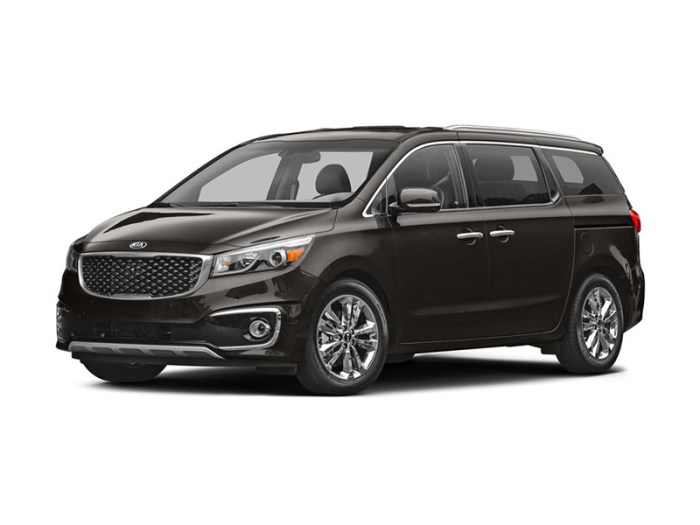kia leasing opens the door to an enticing world of automotive flexibility and affordability, allowing drivers to enjoy the latest Kia models without the long-term commitment of purchasing. With a range of benefits, including lower monthly payments and the chance to drive a new car every few years, leasing has become an appealing option for many consumers.
From understanding the leasing process and its requirements to exploring the variety of Kia models available for lease, this comprehensive overview will guide you through the essentials of Kia leasing. We’ll delve into the financial aspects, maintenance responsibilities, and the steps to take when ending your lease, ensuring you have all the information needed for a smart leasing decision.
Understanding Kia Leasing
Leasing a Kia vehicle is a popular option among consumers looking for flexibility and affordability in their transportation choices. Unlike purchasing a vehicle outright, leasing allows individuals to drive a new car for a predetermined period while making manageable monthly payments. This approach can significantly lower the overall cost of getting behind the wheel of a Kia compared to traditional purchasing methods.Leasing a Kia offers several distinct advantages over buying.
One of the primary benefits is lower monthly payments, as lease agreements typically cover only the depreciation of the vehicle during the lease term rather than the entire value of the car. Additionally, leasing often includes warranty coverage, meaning that maintenance and repair costs may be significantly reduced. The opportunity to drive a new model every few years also appeals to those who appreciate the latest technology and features without the long-term commitment of ownership.
The BMW X7 SUV stands out with its luxurious design and spacious interior, catering to families who appreciate both style and comfort. This flagship vehicle combines performance and advanced technology, making it a top choice for those seeking elegance on the road.
Leasing Process for Kia Vehicles
The leasing process for Kia vehicles involves several key steps, which are essential for potential lessees to understand. This process typically includes evaluating personal needs, reviewing financial options, and completing necessary documentation.To start, prospective lessees should assess their driving habits and budget to determine the right Kia model and lease terms. Once a suitable vehicle is identified, individuals can visit a Kia dealership to discuss leasing options.
The dealership will typically require specific documentation, including:
- Proof of identity, such as a driver’s license.
- Proof of income, which may include recent pay stubs or bank statements.
- Credit score information, as this will help determine eligibility and lease terms.
- Insurance information to ensure proper coverage during the lease period.
The leasing agreement will specify the duration of the lease, typically ranging from 24 to 60 months, and the anticipated mileage limit, often set at around 10,000 to 15,000 miles per year. Exceeding this limit can result in additional fees at the end of the lease.
“Leasing a vehicle is about driving a new car while keeping costs predictable and manageable.”
Upon completion of the paperwork, lessees can take delivery of their Kia vehicle. At the end of the lease term, individuals have the option to purchase the vehicle at a predetermined price or return it to the dealership, paving the way for another leasing opportunity. This cycle allows for continuous access to new technology and comfort without the long-lasting commitment of ownership.
If you’re considering a premium SUV, the Mercedes GLE SUV offers a perfect blend of sophistication and cutting-edge features. Its smooth handling and powerful engine options make it an appealing option for both city driving and off-road adventures, ensuring a versatile driving experience.
Kia Leasing Options

Leasing a Kia vehicle offers a flexible and cost-effective approach for those who appreciate the latest features and technology without the long-term commitment of purchasing. Kia’s leasing options cater to a wide range of preferences, providing potential lessees with various models and terms to suit their driving needs.Kia’s leasing framework includes several attractive options that vary by model, allowing customers to choose terms that align with their financial goals.
Popular models, such as the Kia Soul, Kia Sportage, and Kia Telluride, come with distinct lease terms that can influence the overall monthly payment, mileage allowances, and end-of-lease conditions. Below, a comparison of lease terms and conditions for these models illustrates the differences and helps potential lessees make informed decisions.
Lease Terms and Conditions for Popular Models
Understanding the lease terms for specific Kia models is vital when deciding which vehicle to lease. Below is a summary of the key leasing details for the Kia Soul, Kia Sportage, and Kia Telluride, highlighting monthly payments under various lease terms.
| Kia Model | Lease Term (Months) | Monthly Payment ($) | Mileage Allowance (Miles/Year) |
|---|---|---|---|
| Kia Soul | 36 | $199 | 10,000 |
| Kia Sportage | 36 | $249 | 10,000 |
| Kia Telluride | 36 | $329 | 10,000 |
| Kia Soul | 48 | $179 | 12,000 |
| Kia Sportage | 48 | $229 | 12,000 |
| Kia Telluride | 48 | $309 | 12,000 |
Each model offers unique features and performance capabilities, influencing the leasing cost.
“The Kia Telluride stands out for its spacious interior and advanced safety features, making it a popular choice for families.”
With competitive monthly payments and flexible mileage options, Kia’s leasing plans present an appealing alternative for drivers seeking quality and reliability in their vehicles.
Financial Aspects of Kia Leasing

Leasing a Kia vehicle offers an attractive alternative to purchasing outright, but understanding the financial implications is crucial. This section explores the costs associated with leasing, what to look for in lease agreements, and how to calculate total leasing costs, providing a comprehensive guide for prospective lessees.
Costs Associated with Leasing a Kia
When considering leasing a Kia, it’s essential to understand the primary costs involved. The initial outlay and ongoing monthly payments significantly influence the overall financial commitment. Key components of leasing costs include:
- Down Payments: Many leases require a down payment, which can vary based on the dealership, the model, and promotional offers. This initial payment reduces the overall cost of the lease and can range from zero down to several thousand dollars.
- Monthly Payments: The monthly lease payment is determined by the vehicle’s depreciation, the lease term, and the interest rate (known as the money factor). Generally, leasing a Kia can result in lower monthly payments compared to financing a purchase.
- Taxes and Fees: Depending on your location, sales tax may apply to the lease payments. Additionally, other fees such as acquisition fees, documentation fees, and disposition fees at the end of the lease can add to the overall cost.
- Insurance Costs: Lease agreements often require higher insurance coverage compared to financing a purchase, impacting your monthly budget.
Understanding Lease Agreements
Lease agreements contain crucial details that dictate the terms of your lease. Thoroughly reviewing the lease contract helps avoid unexpected costs and misunderstandings. Important elements to focus on include:
- Lease Term: Typically lasting between 24 to 48 months, the lease term defines how long you will be responsible for the vehicle.
- Mileage Limits: Most lease agreements come with annual mileage limits, usually between 10,000 to 15,000 miles. Exceeding this limit often results in costly penalties.
- Wear and Tear Policy: Understanding what constitutes acceptable wear and tear is essential, as excessive damage may lead to additional charges at lease termination.
- Buyout Option: Some leases offer the option to purchase the vehicle at the end of the lease term. Knowing the buyout price can be beneficial if you wish to keep the car.
“Understanding the fine print in your lease agreement can save you from unexpected charges and ensure a smoother leasing experience.”
Calculating Total Leasing Costs, Kia leasing
Calculating the total cost of leasing a Kia over the lease term involves several steps, and knowing how to do this provides greater clarity on your financial obligations. Consider the following guide for calculation:
- Initial Costs: Start by adding any down payment, acquisition fees, and taxes that are due at lease signing.
- Monthly Payments: Multiply the monthly payment by the number of months in the lease term. For example, if the monthly payment is $300 over a 36-month lease, the total will be $10,800.
- End of Lease Costs: Factor in any potential fees for excess mileage, wear and tear, and disposition fees if applicable.
- Total Cost: Sum up all the costs from the above categories to reach the total leasing cost. For instance, if you have a down payment of $1,500, monthly payments totaling $10,800, and estimated end-of-lease fees of $500, the total would be $12,800.
“The total leasing cost gives you a clear picture of your financial commitment, allowing for better budgeting and decision-making.”
Maintenance and Care During Kia Lease: Kia Leasing
Leasing a Kia vehicle offers numerous benefits, including the flexibility of driving a new model with the latest features. However, maintaining the vehicle in optimal condition during the lease period is essential to avoid additional costs and ensure a smooth experience. Understanding your responsibilities for maintenance and care can significantly impact your lease-end experience.While leasing a Kia, the responsibility for routine maintenance typically falls on the lessee.
Adhering to a maintenance schedule not only preserves the vehicle’s value but also ensures it performs at its best throughout the lease term. Regular maintenance includes oil changes, tire rotations, and inspections, which help to prevent larger, more expensive repairs down the line.
Routine Maintenance Checklist
To keep your leased Kia in excellent condition, it’s vital to follow a routine maintenance checklist. Below is a comprehensive list of tasks that should be conducted regularly:
- Oil Changes: Change the oil and oil filter every 5,000 to 7,500 miles, or as recommended in your owner’s manual.
- Tire Maintenance: Rotate tires every 5,000 to 7,500 miles and ensure proper inflation to enhance fuel efficiency and tire lifespan.
- Brake Inspection: Check brake pads and discs regularly to avoid any safety issues or costly repairs.
- Fluid Checks: Regularly inspect and top off essential fluids, including coolant, brake fluid, and transmission fluid.
- Battery Maintenance: Check battery terminals for corrosion and ensure the battery is in good condition, especially before winter.
- Exterior Care: Wash and wax the vehicle periodically to protect the paint and finish from environmental damage.
- Interior Upkeep: Keep the interior clean and free from debris to maintain its appearance and prevent wear.
- Scheduled Inspections: Follow the manufacturer’s recommended service schedule for inspections and maintenance.
Each of these tasks plays a pivotal role in maintaining the integrity and performance of your Kia. Regular attention to these details not only ensures safety but also enhances your leasing experience.
Mileage Limits and Consequences
Exceeding the mileage limit Artikeld in your lease agreement can result in significant penalties. Most Kia leases come with a predetermined mileage cap, commonly ranging from 10,000 to 15,000 miles per year. It’s crucial to monitor your mileage and plan accordingly. The financial implications of exceeding the mileage limit can be substantial. Typically, lessees incur a charge for each mile driven over the limit, which can range from $0.15 to $0.25 per mile, depending on the lease agreement.
For instance, if your lease allows 12,000 miles yearly and you drive 15,000, you may face a charge of up to $750 at lease end.
Staying within your mileage limit is essential to avoid unexpected costs at the end of your lease term.
To mitigate the risk of exceeding the mileage limit, consider the following strategies:
- Keep a log of your monthly mileage to remain aware of your usage.
- Plan trips efficiently to minimize unnecessary driving.
- Consider purchasing additional mileage upfront from the leasing company if you anticipate exceeding the limit.
By adhering to a regular maintenance schedule and monitoring your mileage, you can maximize the benefits of your Kia lease while avoiding avoidable costs and complications.
Ending a Kia Lease

When your Kia lease term comes to an end, it’s important to understand the steps you’ll take to return the vehicle and explore your options moving forward. Ending a lease can be straightforward if you are aware of the necessary procedures and choices that await you.Returning a leased Kia vehicle typically involves a few crucial steps to ensure a smooth transition.
First, you should review your lease agreement for any specific return requirements and inspect the vehicle for any damage or excessive wear that might incur additional fees. Next, you will schedule a return appointment with your local dealership, where an inspection will be conducted. During this inspection, any necessary repairs or fees will be communicated to you. Finally, you’ll return the keys, along with any provided accessories, and complete the paperwork to finalize the return process.
Options Available at the End of the Lease Term
At the conclusion of your Kia lease, you have several pathways to consider. Many lessees opt to lease a new vehicle, but you also have the option to purchase the vehicle you’ve been leasing at a predetermined price, often referred to as the residual value. This value is stated in your lease agreement and is based on the estimated depreciation of the vehicle over the lease term.
In addition to these primary options, you could also explore the possibility of extending your lease if you find yourself needing more time with the vehicle before making a decision. This is a beneficial option if your circumstances change, or if you want to avoid purchasing a new vehicle immediately.Here is a table outlining potential fees associated with early termination of a Kia lease:
| Fee Type | Description |
|---|---|
| Early Termination Fee | A fee charged for ending your lease before the agreed-upon term. |
| Excess Wear and Tear Charges | Costs incurred for damage beyond normal wear and tear. |
| Missed Payments | Any outstanding lease payments that need to be settled. |
| Disposition Fee | A fee charged for the return and processing of the leased vehicle. |
Understanding these fees is essential in making an informed decision about your leasing options. By being prepared, you can navigate the end of your Kia lease with confidence and ease.
